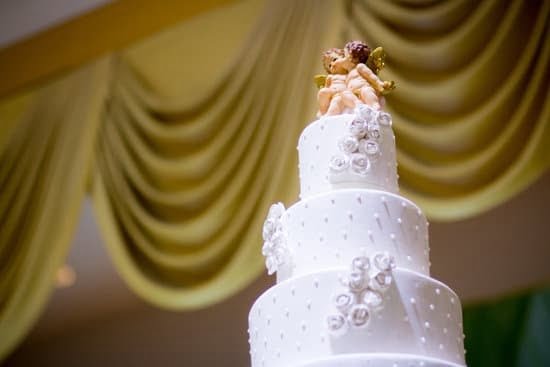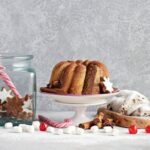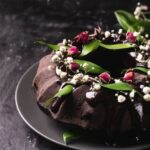Are you looking to learn how to decorate a homemade cake? Whether you’re a beginner or have some experience in cake decorating, adding a personal touch to your homemade cakes can bring joy and satisfaction. In this article, we’ll explore the art of decorating homemade cakes, from basic techniques to advanced methods, and provide tips for making your creations stand out.
Decorating a homemade cake is all about expressing your creativity and personal style. With the right tools and techniques, you can transform a simple cake into a work of art that reflects your individuality and the occasion you’re celebrating. From choosing the perfect cake base to adding final touches, we’ll guide you through each step of the process.
Join us as we delve into the world of cake decorating, where we’ll cover essential tools, selecting the right cake base, beginner-friendly decorating techniques, advanced methods for taking your cakes to the next level, using fondant and edible decorations, experimenting with color and texture, adding personalized touches for special occasions, and finishing off with professional presentation. Whether you’re baking for a birthday, wedding, or any other special event, this article has got you covered.
Basic Cake Decorating Tools and Supplies
When it comes to decorating a homemade cake, having the right tools and supplies is essential for achieving professional-looking results. Whether you’re a beginner or an experienced baker, there are a few basic cake decorating tools that you should have in your kitchen.
One of the most important cake decorating tools is a turntable, which allows you to easily rotate the cake as you add frosting and decorations. This makes it much easier to achieve smooth and even frosting around the entire cake. In addition to a turntable, you’ll also need an offset spatula for spreading frosting and creating smooth surfaces on the cake.
Piping bags and piping tips are also essential for creating decorative patterns and designs on your homemade cake. These can be used to create borders, flowers, writing, and other intricate details. Along with these tools, having a good quality cake stand, cake leveler, and bench scraper can make the decorating process much easier and more enjoyable. By investing in these basic cake decorating tools and supplies, you’ll be well-equipped to create beautiful cakes for any occasion.
Choosing the Right Cake Base
When it comes to decorating a homemade cake, one of the most important aspects to consider is choosing the right cake base. The type of cake you use will greatly impact how well it holds up to decorations and how well it complements the flavors you plan to incorporate. Here are some tips for selecting the perfect homemade cake base:
First and foremost, consider the flavor profile you want to achieve. If you’re planning on adding bold flavors like chocolate or fruit, you’ll want a cake that can stand up to those flavors without being too overpowering. For example, a chocolate fudge cake may be too rich if paired with a heavy fruit filling, so a lighter vanilla or almond sponge could be a better fit.
In addition to flavor, think about the texture of your desired cake base. A moist and dense cake like a pound cake may be ideal for heavy decorations or fondant coverings, while a light and airy sponge cake might be better suited for delicate frosting designs. Consider the weight of your decorations and how they will interact with the texture of your chosen cake base.
Finally, consider the occasion for which you are making the cake. If it’s for a special celebration like a wedding or anniversary, opt for a more elegant and sophisticated base such as a chiffon or genoise sponge. For casual gatherings or children’s birthdays, a simple buttery yellow cake or classic white cake might be more appropriate. By taking these factors into account, you can ensure that you select the perfect homemade cake base for your decorating needs.
Step-by-Step
Decorating a homemade cake can be a fun and rewarding experience, especially for beginners. With the right tools and techniques, you can create a beautiful and delicious masterpiece that will impress your friends and family. Here are some step-by-step decorating techniques for beginners to help you get started:
- Prepare Your Cake: Start by ensuring that your cake is completely cooled before you begin decorating. You can also level the top of your cake to make it easier to work with.
- Choose Your Frosting: Decide on the type of frosting you want to use – buttercream, cream cheese, or ganache are popular choices. Make sure to have enough frosting to cover the entire cake.
- Crumb Coat the Cake: To prevent crumbs from mixing with your final layer of frosting, apply a thin layer of frosting all over the cake. This will create a smooth base for your final decorations.
Once you have completed these basic steps, you can move on to adding simple decorations such as piped borders, rosettes, and writing using a piping bag and different tips. Don’t be afraid to experiment with different designs and techniques – practice makes perfect. Remember, the key is to have fun and enjoy the process of creating something special.
Advanced Decorating Techniques: Taking Your Cake to the Next Level
For those who have mastered the basics of cake decorating, there are many advanced techniques that can take your homemade cakes to the next level. From intricate piping designs to working with fondant and other edible decorations, there are endless possibilities for creating show-stopping cakes that will impress any audience.
Advanced Decorating Techniques
Once you have mastered the basic cake decorating techniques, it’s time to take your homemade cakes to the next level with advanced decorating techniques. These techniques will help you create show-stopping cakes that are sure to impress your friends and family.
Here are some advanced decorating techniques to consider trying out:
- Piping: Experiment with different piping tips to create intricate designs and textures on your cake. From buttercream flowers to elaborate borders, piping can add a professional touch to your homemade cake.
- Layering: Create visually stunning cakes by experimenting with multiple layers, fillings, and frosting flavors. Try making a naked cake with exposed layers for a rustic look, or go all out with a towering, multi-layered creation.
- Sculpting: For those feeling particularly adventurous, try sculpting shapes or figures out of fondant or modeling chocolate to create unique cake decorations. Whether it’s animals, objects, or even people, sculpting can add a whimsical element to your homemade cake.
These advanced decorating techniques may take some practice to master, but don’t be afraid to experiment and let your creativity shine through. With some patience and determination, you’ll be able to create stunning and impressive homemade cakes that are sure to be the centerpiece of any celebration.
Tips for Using Fondant and Edible Decorations
Fondant and edible decorations are popular choices for adding a touch of elegance and creativity to homemade cakes. Fondant, a pliable icing that can be rolled out and draped over cakes, provides a smooth finish and allows for intricate designs.
Edible decorations such as flowers, figurines, and shapes made from fondant or gum paste can elevate the look of a cake and make it truly stand out. Here are some tips for using fondant and edible decorations to take your cake decorating skills to the next level.
Firstly, when working with fondant, it’s important to ensure that your cake is properly prepared. A smooth frosting base will provide the best surface for applying fondant. Additionally, lightly dusting your work surface with powdered sugar or cornstarch will prevent the fondant from sticking as you roll it out. It’s also crucial to knead the fondant before use to make it pliable and free of cracks.
When using edible decorations, consider incorporating different techniques such as molding, shaping, and painting on fondant or gum paste. Experiment with various tools like silicone molds, cutters, and food-safe paintbrushes to create unique edible embellishments for your cake. These decorations can be made well in advance and stored in a cool, dry place until you’re ready to use them.
Lastly, don’t be afraid to mix and match different types of edible decorations. From hand-painted details on fondant to three-dimensional figurines, combining various elements can add depth and visual interest to your cake design. Whether you’re creating a simple yet elegant look or a whimsical theme, using fondant and edible decorations opens up endless possibilities for expressing your creativity through homemade cake decorating.
Incorporating Color and Texture
Using Natural Ingredients for Color
One way to incorporate vibrant colors into your cake is by using natural ingredients such as fruits, vegetables, and spices. For example, pureed strawberries can give your frosting a beautiful pink hue, while matcha powder can create a stunning green color. Beets are also great for creating a deep red shade, and turmeric can produce a lovely yellow tone. Using these natural ingredients not only adds color but also imparts delicious flavors to your cake.
Adding Textured Elements
In addition to incorporating color, adding textured elements to your cake can make it visually appealing as well as enjoyable to eat. Consider using edible flowers, chopped nuts, or decorative sprinkles to add dimension and crunch to your cake. You can also experiment with different piping techniques to create intricate designs that add texture to the surface of the cake. The combination of visual appeal and varied textures will make your homemade cake truly stand out.
Playing With Different Frosting Techniques
Frosting is not just for covering the surface of the cake – it’s also an opportunity to introduce creative textures and patterns. Try experimenting with different frosting techniques such as ombre designs, watercolor effects, or even marbling for a unique visual impact. By playing with different frosting techniques, you can add depth and interest to your homemade cake that will impress all who see it.
Personalizing Your Cake
When it comes to homemade cake decorating, adding a personal touch can make your creation even more special. Whether you’re baking for a birthday, anniversary, or any other occasion, there are countless ways to personalize your cake and make it stand out. From customized toppers to hand-piped messages, the possibilities are endless.
Customized Cake Toppers
One of the easiest ways to personalize a homemade cake is with a customized cake topper. Whether it’s a number for a milestone birthday, the initials of the couple for a wedding cake, or a themed decoration for a special event, there are plenty of options available. You can either purchase pre-made toppers or get creative and make your own using materials like fondant, gum paste, or even paper.
Hand-Piped Messages
Another way to add a personal touch to your homemade cake is by piping a special message onto the surface. This could be anything from “Happy Birthday” to “Congratulations” or even inside jokes and meaningful quotes.
Using a piping bag and some frosting in a contrasting color to the cake base, you can easily write out any message you desire. Practice on parchment paper first if you’re new to piping letters and then transfer your skills onto the cake when you feel confident.
Photo Cake Printing
For an extra-special touch, consider having an edible image printed onto your cake. You can take a photo of the person or event being celebrated and have it transferred onto edible paper using food coloring. Then simply place it on top of your frosted cake for a unique and memorable decoration that will surely impress your guests.
Personalizing your homemade cake is not only fun and rewarding but also allows you to create something truly unique for any occasion. With these simple yet effective techniques, you can elevate your cake decorating skills and turn any homemade dessert into a personalized masterpiece.
Final Touches and Presentation
After you have completed decorating your homemade cake, it’s time to add those final touches that will make it look professional and delicious. One important aspect to consider is the presentation of your cake. Whether it’s for a special occasion or just for your own enjoyment, a well-presented cake can make all the difference.
Consider using a cake stand or a decorative platter to showcase your creation. This will not only elevate the appearance of your cake but also make it easier to serve.
Another way to make your homemade cake look professional is by paying attention to detail. Use a pastry brush to gently remove any excess crumbs from the surface of the cake before adding any final decorations. Additionally, ensure that any frosting or icing is smoothed out and even, giving your cake a polished finish.
In terms of flavor, you can add some extra pizzazz by incorporating complementary flavors into your final touches. For example, if you have made a vanilla cake, consider adding fresh berries as a garnish or on the side of the serving platter. Or if you’ve made a chocolate cake, a sprinkle of cocoa powder or chocolate shavings on top can enhance the overall presentation and taste.
| Final Touches | Presentation |
|---|---|
| Use pastry brush for crumbs | Use decorative platter or cake stand |
| Incorporate complementary flavors | Ensure smooth and even frosting/icing |
Conclusion
In conclusion, decorating a homemade cake is not just about creating a tasty treat, but also an opportunity to express creativity and personal style. Whether you are a beginner or have some experience in cake decorating, the joy of making something beautiful and delicious from scratch is unparalleled. With the right tools, techniques, and imagination, anyone can create a stunning homemade cake that will impress friends and family alike.
Exploring different decorating techniques, such as piping, frosting textures, and fondant sculpting, can elevate your homemade cake to the next level. It’s important to remember that practice makes perfect, and don’t be afraid to experiment with new ideas and designs. Using color effectively and incorporating edible decorations can add an extra element of visual appeal to your cakes.
Ultimately, the art of homemade cake decorating is all about personalization. Whether it’s for a birthday celebration, holiday gathering, or any special occasion, adding a personalized touch to your cake shows thoughtfulness and care.
With attention to detail in the final touches and presentation, you can make your homemade cake look professional and taste absolutely delicious. Embracing the art of homemade cake decorating allows you to create memorable experiences for both yourself and those who are lucky enough to enjoy your delectable creations.
Frequently Asked Questions
How to Decorate a Simple Homemade Cake?
Decorating a simple homemade cake can be fun and easy. Start by choosing a theme or color scheme for your cake. You can use frosting, icing, or whipped cream to add a decorative touch.
Consider using piping bags with different tips to create designs like rosettes, swirls, or flowers. Adding fresh fruit, edible flowers, or chocolate shavings can also elevate the look of your homemade cake.
How to Decorate a Cake for Beginners?
If you’re just starting out with cake decorating, there are a few simple techniques you can try. Using a spatula to create smooth frosting on the cake’s surface is a great starting point.
You can also try using store-bought fondant to roll out and place on your cake for a smooth finish. Experimenting with basic piping techniques using different tips and colors can help you create visually appealing designs even as a beginner.
How Do You Make a Homemade Cake Look Professional?
Making a homemade cake look professional involves paying attention to details and presentation. Start by ensuring that your cake layers are level and evenly stacked before applying frosting or icing. Taking the time to crumb coat your cake will result in a smoother final layer of frosting.
Using tools like offset spatulas and bench scrapers can help achieve clean lines and smooth surfaces on the finished cake. Finally, consider adding embellishments like dusted cocoa powder, decorative stencils, or gold leaf for an extra touch of sophistication.

Welcome to my blog about home and family. This blog is a place where I will share my thoughts, ideas, and experiences related to these important topics. I am a stay-at-home mom with two young children. I hope you enjoy reading it! and may find some helpful tips and ideas that will make your home and family life even better!





